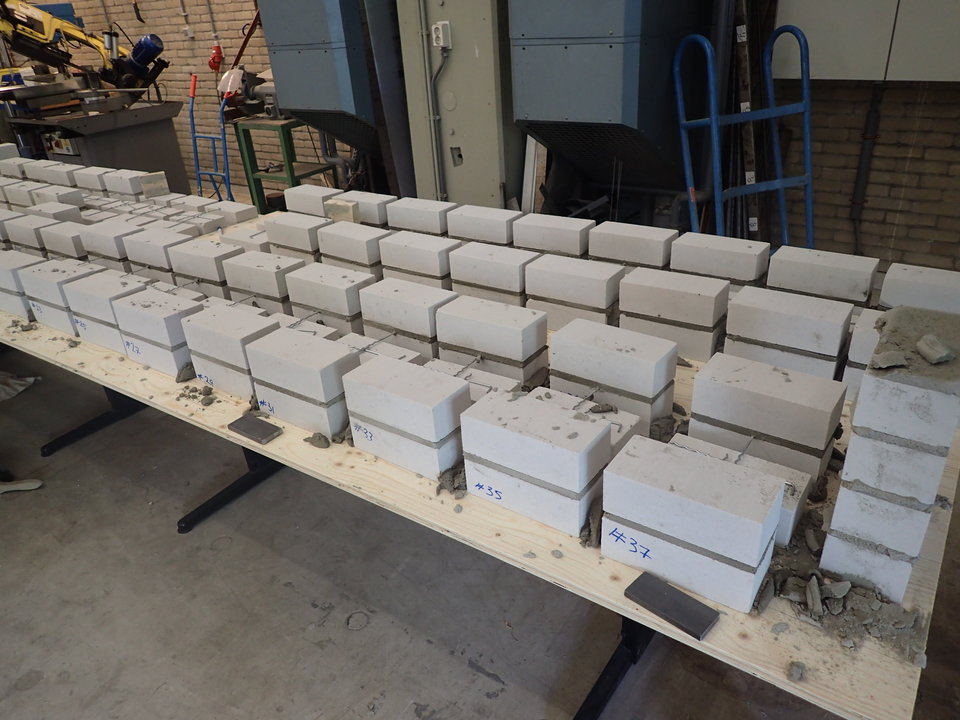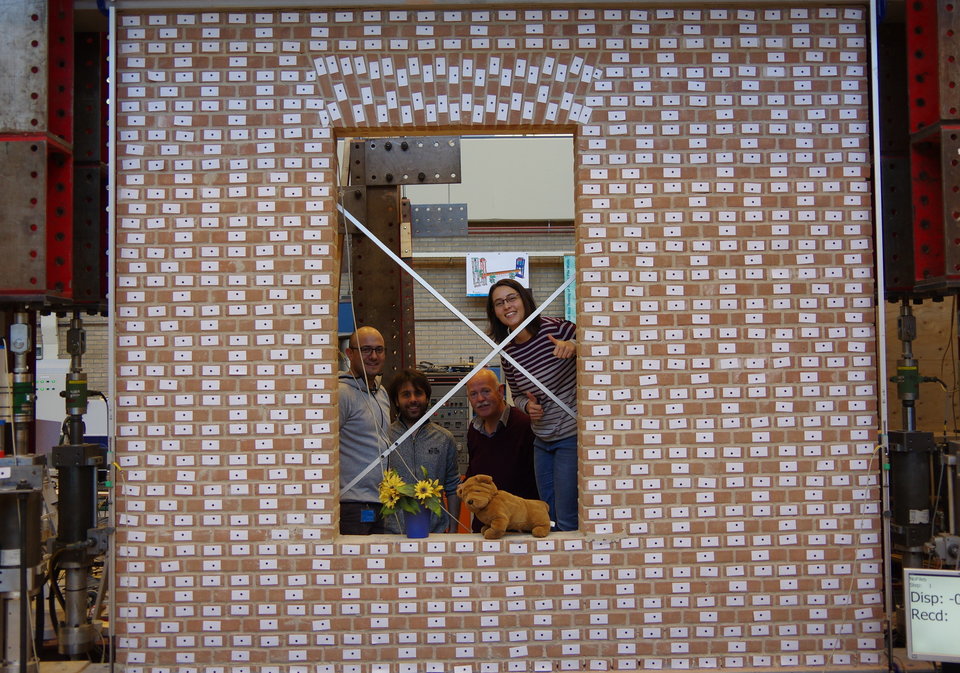Safety assessment
Ultimate limit state
In the framework of safety assessment, multiscale experimental tests from material to structural level has been carried out. Upon the definition of relevant building typologies carried out by other parties, a first phase of the research focus on the characterisation of materials extracted from existing structures. In the second phase, the materials and buildings characteristics were replicated in the laboratory to get a better understanding of their performances.
An extensive material characterisation was carried out both for unreinforced masonry and timber elements. The nonlinear response of several types of unreinforced masonry under tension, compression and shear was determined both on specimen extracted from existing buildings and specimen replicated in laboratory. This allowed the development of constitutive law for nonlinear finite element analysis and the definition of a database of material properties. The development and validation of slightly invasive testing methods for in-situ applications was carried out.
Destructive and non-destructive laboratory tests were also performed on timber samples extracted from floors and roofs of typical Dutch detached and terraced houses around Groningen.
At connection level, the characterisation of wall-to-floor connections and wall-to-wall was investigated by performing axial and shear tests under monotonic, quasi-static cyclic and dynamic tests. In particular, the connection between masonry walls and flexible timber diaphragms (floor, roof) were studied by considering the existing as-built conditions and possible strengthening measures. An extensive study on the performance of existing and retrofitting wall ties for cavity walls was carried out.
At component level, masonry walls and timber diaphragms were tested. Both quasi static in-plane and out-of-plane tests were performed either on single piers or on walls with openings. Different materials, geometries, and boundary conditions were considered, and the influence of the different parameters evaluated. Strengthening measures for the reduction of damage and enhancement of seismic performance of masonry walls were tested. The response of as-built and retrofitted timber diaphragms were cyclically tested, loading them in both directions (parallel and perpendicular to the main joists).
Two quasi-static cyclic tests were carried out on full-scale two-storey structures representative of typical Dutch terraced houses that is one of the most vulnerable building typology in the area. Both structures had a stiff concrete floor and the walls were made either of calcium silicate brick or calcium silicate element masonry.

Material level

Connection level

Component level
